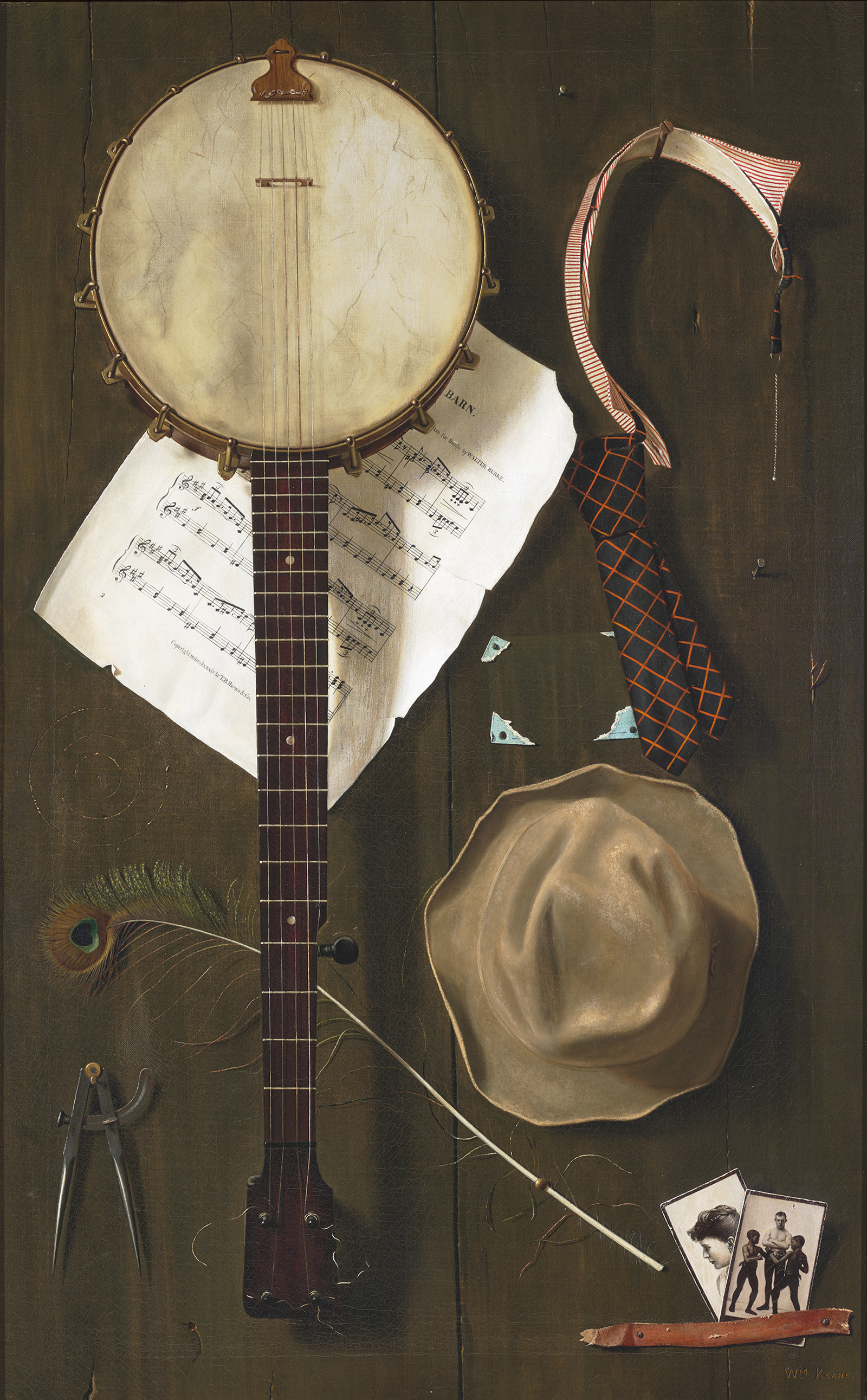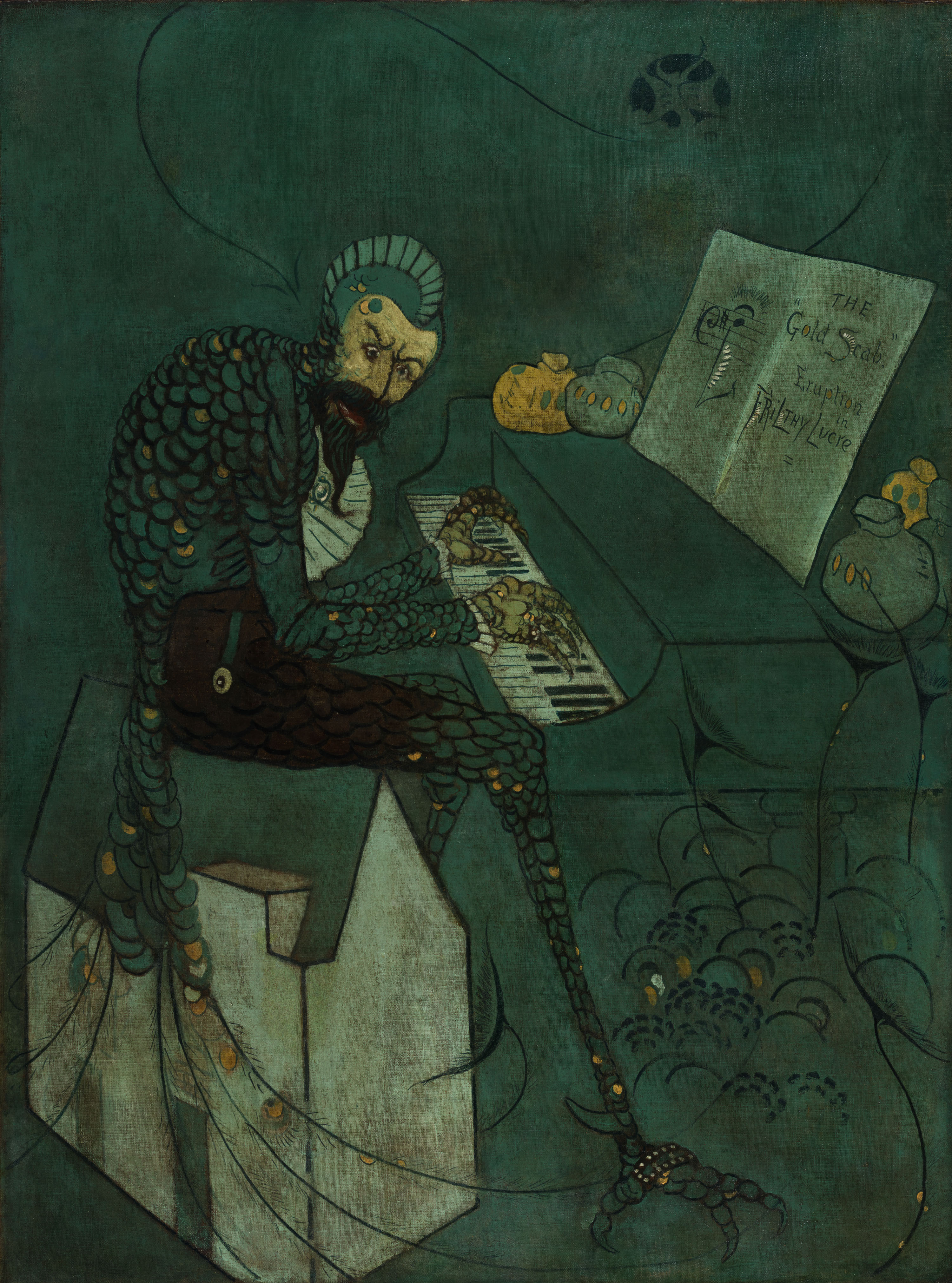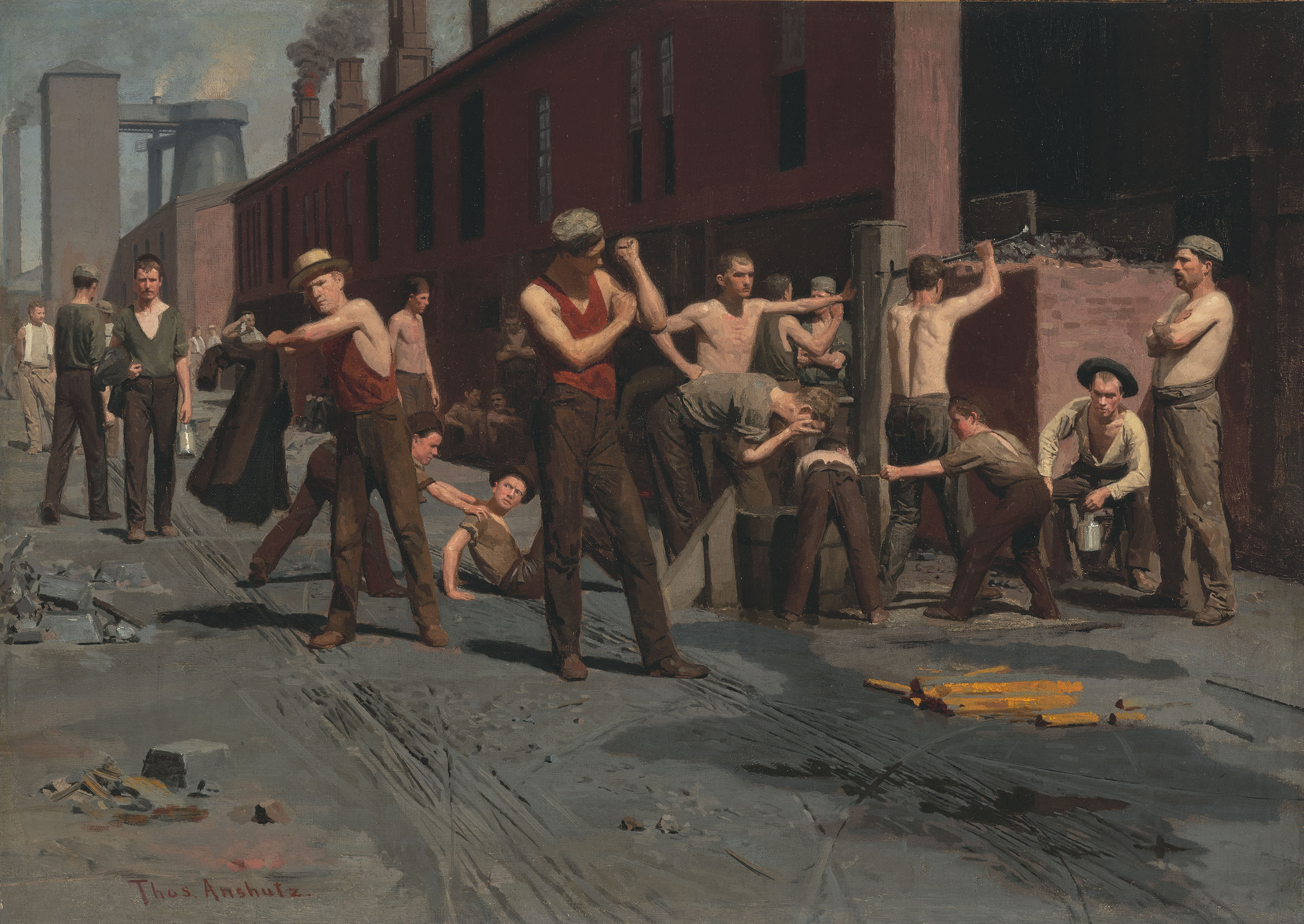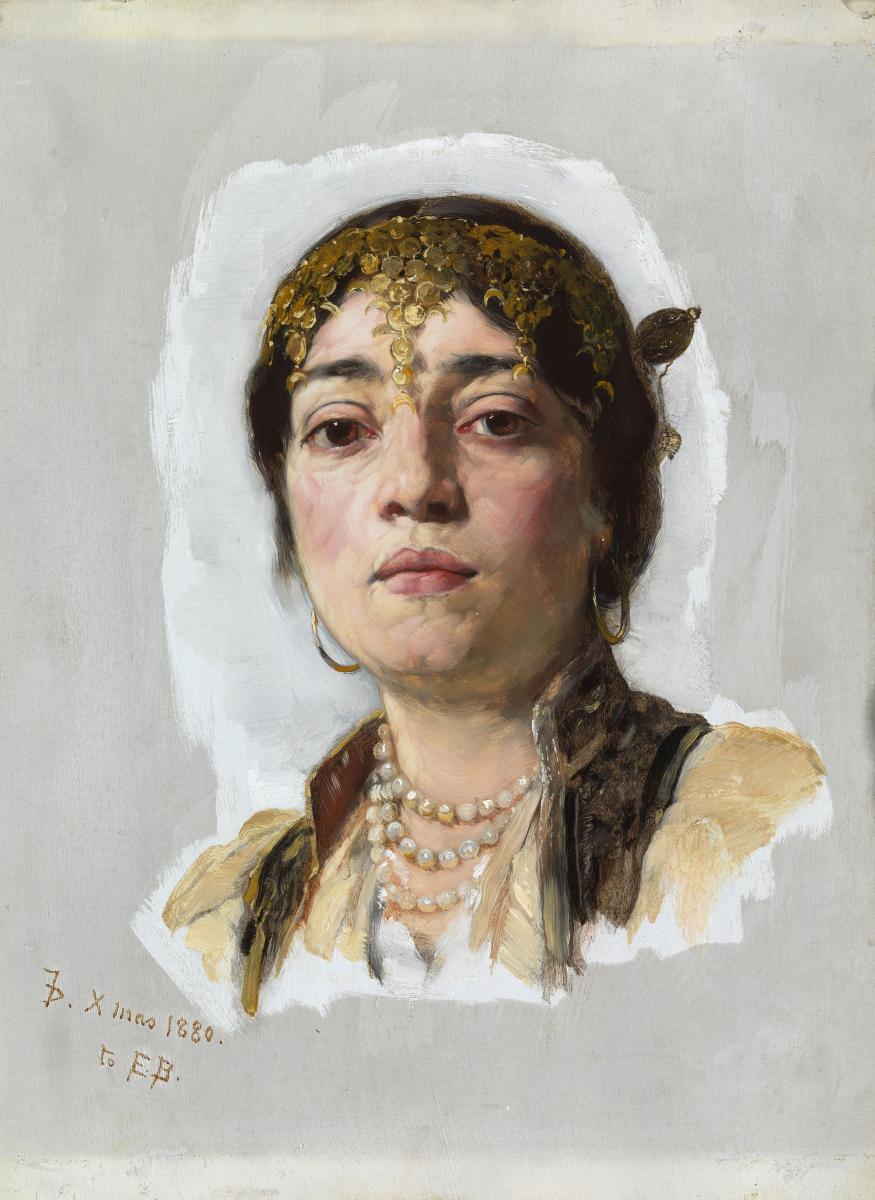The Cup We All Race 4
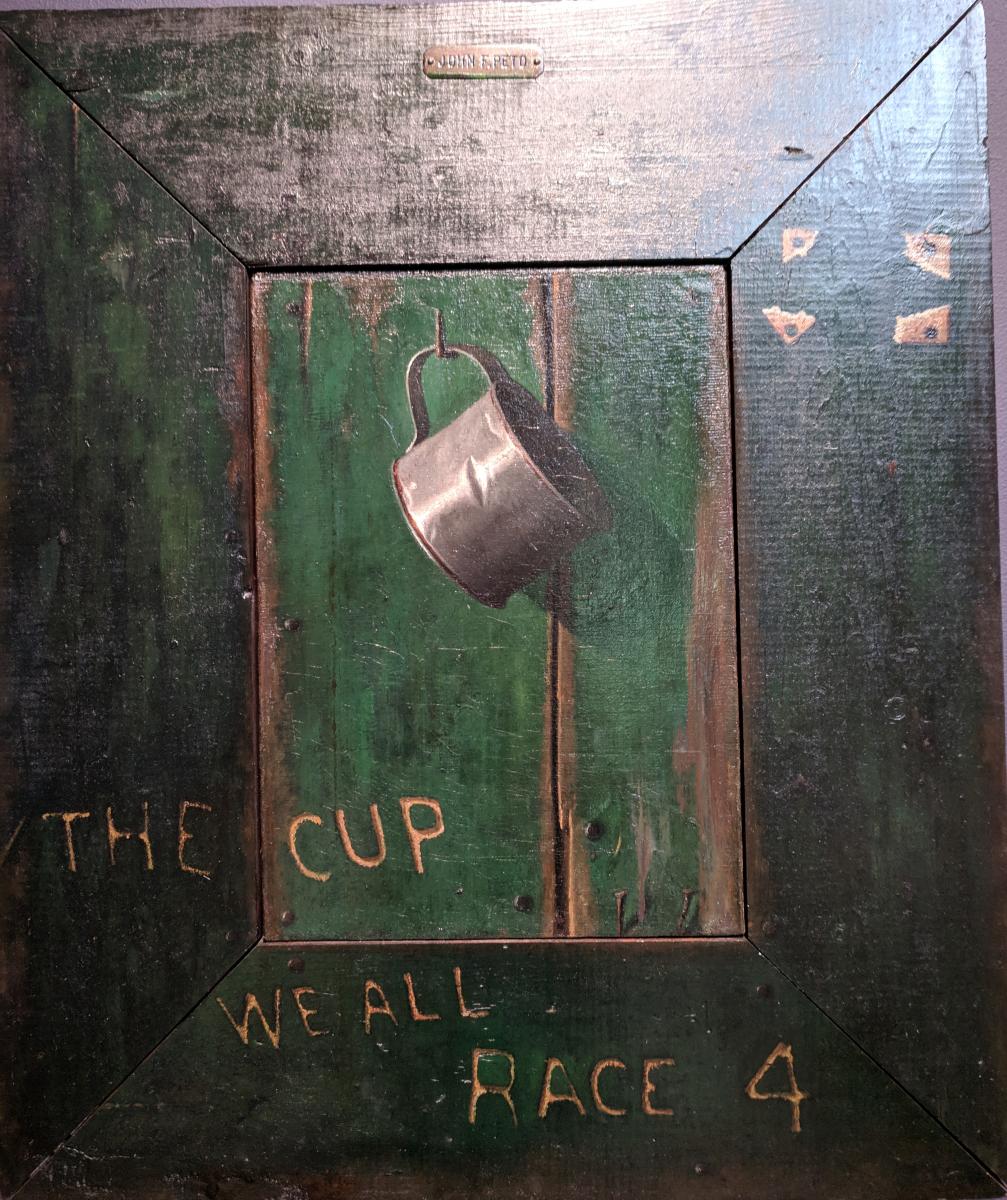
What does the title of this painting mean to you?
The Cup We All Race 4 presents a visual rebus and pushes painting beyond representation to question the boundaries between reality and illusion. The central boards—with their hook and nails, tin cup, and incised letters—are painted on the canvas. But the painting’s frame is made of actual wooden boards, painted to match those depicted. The artist’s game is made even more convincing by the realistic scale of all these objects and the mysterious title.

